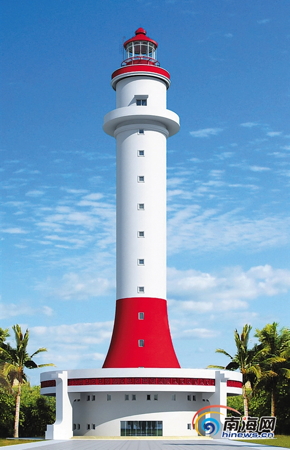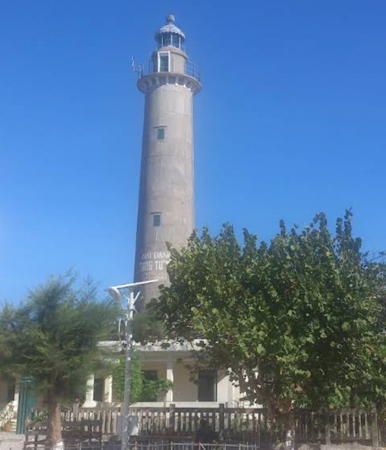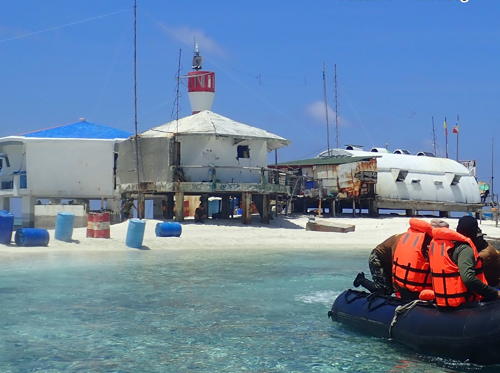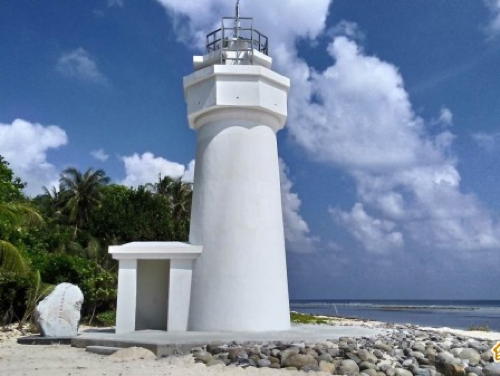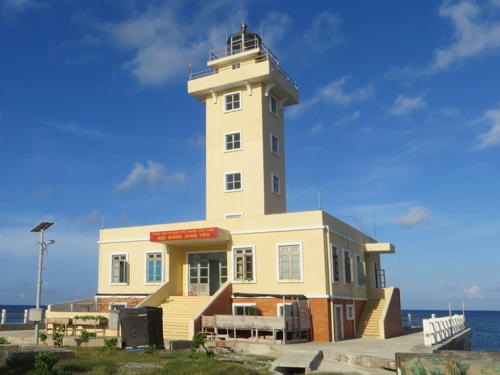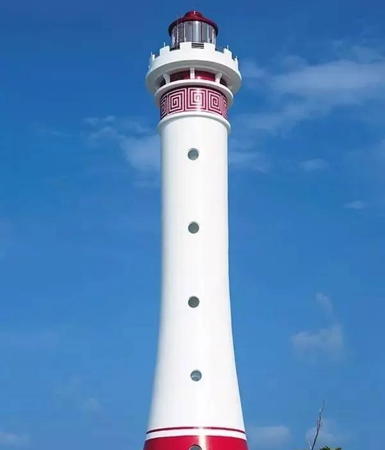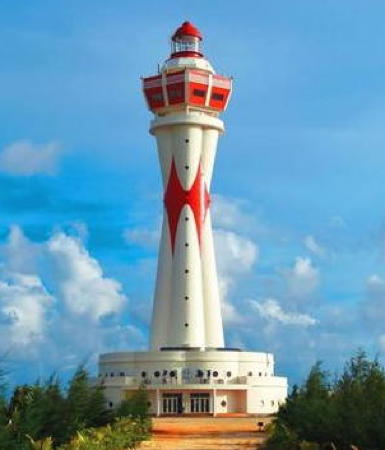The Spratly Islands (as they are known historically in the West) are a group of more than 100 islands and reefs spread across an elliptical area 1000 km (625 mi) long and 400 km (250 mi) wide in the South China Sea northwest of Borneo, southwest of the Philippines, and east of Vietnam. The history of the islands is long but poorly known. Historically they were often visited by fishermen but never inhabited permanently. Both China and Vietnam assumed ownership of them. In 1933 France claimed the islands formally as part of French Indochina and China responded by filing its own claim in 1935. During World War II Japan (then in possession of Taiwan) established several bases in the islands. The scramble to exert control of the islands began soon after the war. Presently Vietnam, China, and Taiwan claim all of the islands, the Philippines claims most of them, Malaysia claims some of them, Brunei claims one of them, and Indonesia has economic interests in the area although it has made no formal claims.
Following the reunification of the country in 1975 Vietnam moved quickly to establish a presence in the Spratlys. More recently China has occupied many of the islands and established several large bases. Taiwan, Malaysia, and the Philippines also occupy several islands. All five countries have established navigational lights in the Spratlys and Vietnam and China have built multiple major lighthouses. These lights do have navigational value but they are also built as assertions of sovereignty, even though international tribunals have ruled several times that building a lighthouse does not establish ownership of an island.
Please note that the Lighthouse Directory does not express support for any nation in the disputes over this area. The only purpose of this page is to list and describe the lighthouses of the islands. They are grouped by geography. The various reefs are identified by their "international" (that is, Western) names. Each island is identified by the name used by the occupying nation with the Western name in parentheses.
In China, including Taiwan, the South China Sea is called the South Sea (Nán Hǎi) and the Spratlys are called the Nánshā Islands. The People's Republic's territories are attached administratively to Hǎinán Province. In 2012 China announced the creation of the prefectural-level city of Sānshā, including the Paracel Islands (Xīshā) and the Nánshā Islands. Taiwan's territories are administered as part of Kaohsiung City.
In Vietnam the South China Sea is called the East Sea (Biển Đông) and the Spratlys are called Trường Sa. The Vietnamese territories are administered as a county of Khánh Hòa Province.
In the Philippines the South China Sea is called the West Philippine Sea and the Spratlys are called the Kalayaan Islands. The Philippine territories are administered as the Kalayaan municipality of Palawan Province.
Malaysia uses the translated Western names of the South China Sea (Laut Cina Selatan) and Spratly Islands (Kepulauan Spratly). The Malaysian territories are administered by Sabah state.
This page includes lighthouse on the reefs and islands north of latitude 9° north. The Southern Spratly Islands page covers the rest of the archipelago.
ARLHS numbers are from the ARLHS World List of Lights. Admiralty numbers are from volume F of the Admiralty List of Lights & Fog Signals. U.S. NGA List numbers are from Publication 112.

Sơn Ca Light, Tizard Bank, April 2013
Google Maps photo by Trọng Tâm Đào
